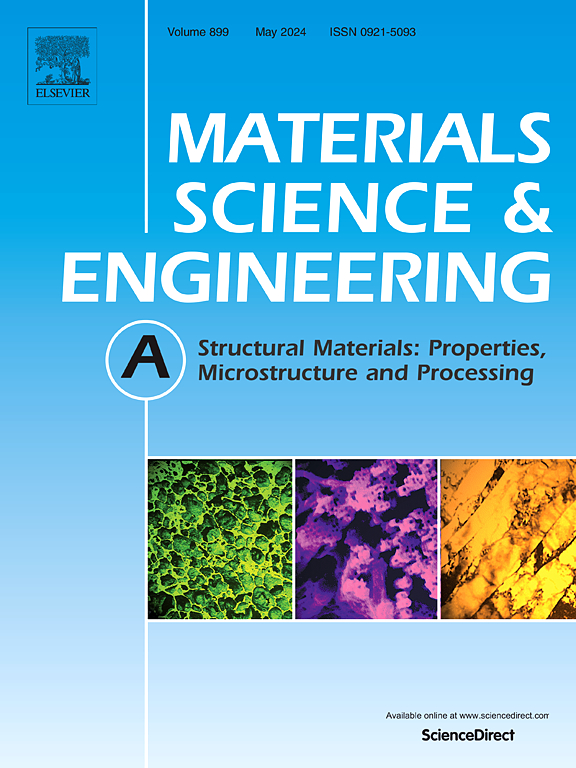Cyclic pseudoelastic behavior of friction stir processed NiTi shape memory alloy: Microstructure and W-alloying
IF 6.1
2区 材料科学
Q1 MATERIALS SCIENCE, MULTIDISCIPLINARY
引用次数: 0
Abstract
A Ni49.2Ti50.8 (nitinol) shape-memory alloy was prepared using a vacuum re-melting furnace. The surface of the alloy was modified, and tungsten surface alloying was applied using the friction stir processing (FSP) technique, with varying tool rotational speed as the crucial processing parameter. The aim was to engineer microstructural evolutions and phase transformations in surface-modified and alloyed NiTi materials and assess the developments in mechanical properties. The research focused on the pseudoelastic behavior of processed shape memory materials upon cyclic loading and unloading tensile experiments, depending on microstructural details and alloy design. The electron backscatter diffraction (EBSD) analysis of stirred zones of NiTi and NiTi/W alloys revealed significant grain structural refinement undergoing the operative dynamic recrystallization (DRX) mechanism and the formation of an equiaxed microstructure with an average size of less than 9.6 μm, with a preferred substantial shear orientation majority. The hardness of NiTi alloy increased up to ∼344 Vickers by friction stir modification. Implementing FSP under the rotational speed of 800 rpm and traverse velocity of 50 mm/min yielded the best pseudoelastic properties for the modified alloy up to around 8 % strain, concerning the 10 % strain response of the primary cast alloy before modification. Meanwhile, applying thermal aging at an optimized temperature of 500 °C for 2 h improved the pseudoelastic behavior of the FSP-treated alloy up to ∼20 % strain, compared to the upgraded value of ∼14 % strain for the base alloy after the same post-heat treatment. The micro-mechanisms beyond such evaluation trends in pseudoelastic properties depending on the thermo-mechanical action of FSP were discussed and clarified.
求助全文
约1分钟内获得全文
求助全文
来源期刊

Materials Science and Engineering: A
工程技术-材料科学:综合
CiteScore
11.50
自引率
15.60%
发文量
1811
审稿时长
31 days
期刊介绍:
Materials Science and Engineering A provides an international medium for the publication of theoretical and experimental studies related to the load-bearing capacity of materials as influenced by their basic properties, processing history, microstructure and operating environment. Appropriate submissions to Materials Science and Engineering A should include scientific and/or engineering factors which affect the microstructure - strength relationships of materials and report the changes to mechanical behavior.
 求助内容:
求助内容: 应助结果提醒方式:
应助结果提醒方式:


